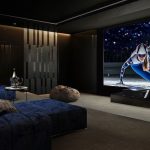As any boating enthusiast knows, there’s nothing quite like spending a day out on the water. Whether fishing, waterskiing or simply enjoying a leisurely cruise, being out on a boat is a unique adventure. Of course, having quality sound on your boat can add to the experience and make it even more enjoyable. That’s where marine speakers come in.
Whether you’re hosting a party or enjoying some tunes while cruising, good sound is essential to a fun boat trip. However, choosing the right speakers for your boat can be challenging, given the variety of options available in the market. That said, here are some valuable tips.
How Do Marine Speakers Differ From Regular Ones?

Before we dive into the nitty-gritty details of shopping for marine speakers, it’s important to understand what makes them different from the traditional models on the market. The marine environment can be harsh, with constant exposure to moisture, salt, and other elements that can damage electronics. So, the speakers for boats are specifically designed to withstand these conditions.
They’re built to be water-resistant and weather-resistant, with materials and coatings that protect them from the elements. They’re also designed to produce high-quality sound in open-air environments. They typically have higher power-handling capabilities and larger cones than regular speakers, which helps them to produce a louder and clearer sound.
Additionally, marine speakers often come with UV-resistant coatings to protect them from sun damage and are usually rated with an International Protection Code (IP) number, which indicates the degree of protection against water, dust, and other foreign materials.
Factors to Consider When Choosing

Box vs. Flush-Mount
Box speakers are the simplest to install and come with their own acoustically built housing. They have the benefit of not requiring you to drill holes in your boat to install them, but as they take up more room, they could add clutter to a crowded cockpit.
Then, there’s the flush-mount option. Although they require a cutout, flush-mount designs are neat and stylish, may fit in small areas, and won’t snag on cables or gear. Also, mounting these correctly can be challenging.
Number of Drivers
Two-way (Coaxial) – In order to handle the high frequencies and precisely reproduce the sound spectrum of your music, two-way, or coaxial, models have a second tweeter housed inside the woofer.
Three-way (Triaxial) – For more richness and realism, these speakers combine a midrange driver with a separate woofer and tweeter.
Dual Cone – Dual cone speakers use a small high-frequency cone connected in the middle of the woofer and are a less expensive alternative. Dual cone versions don’t have two voice coils like two-way speakers do (the coil of wire that converts the electrical signal from the receiver into mechanical vibration that drives the cone of the speaker).
Power-Handling Capacity
Bigger is better isn’t always true when it comes to the power handling of boat speakers. Power handling refers to how much power the speakers can handle without distortion. A 10-watt signal won’t sound better on a 100-watt model than it does on a 10-watt one. To prevent failure when the volume is turned up, make sure the models you choose are rated for at least the same RMS watts output as your receiver.
Impedance
Another critical factor to consider is impedance. Impedance refers to the resistance that the speakers offer to the flow of electrical current. It’s important to get a model with the correct impedance, as an incorrect impedance can lead to poor sound quality and affect your audio system.
Installation and Maintenance
When installing speakers for boats, it’s important to follow the manufacturer’s instructions carefully. Improper installation can lead to poor sound quality, damage, and even safety hazards. It’s also important to ensure that they are mounted securely and positioned in a way that will provide optimal sound quality.
Maintenance is also essential to keep your marine boat speakers in good condition. Regular cleaning and inspection will help to prevent damage from saltwater and other elements. It’s also important to check the wiring and connections regularly to ensure that they are secure and not corroded.
If you notice any issues, such as distorted sound or crackling, it’s important to address them immediately before they cause further damage to your audio system.
To Sum Up
Choosing the right marine audio speakers for your boat is essential to ensure a great sound experience on the water. By considering factors such as power handling, impedance, mounting, and the number of drivers, you can find the best option for your needs and preferences. Additionally, make sure to thoroughly research the options available and invest in highly-rated brands and models to get the best bang for your buck.


